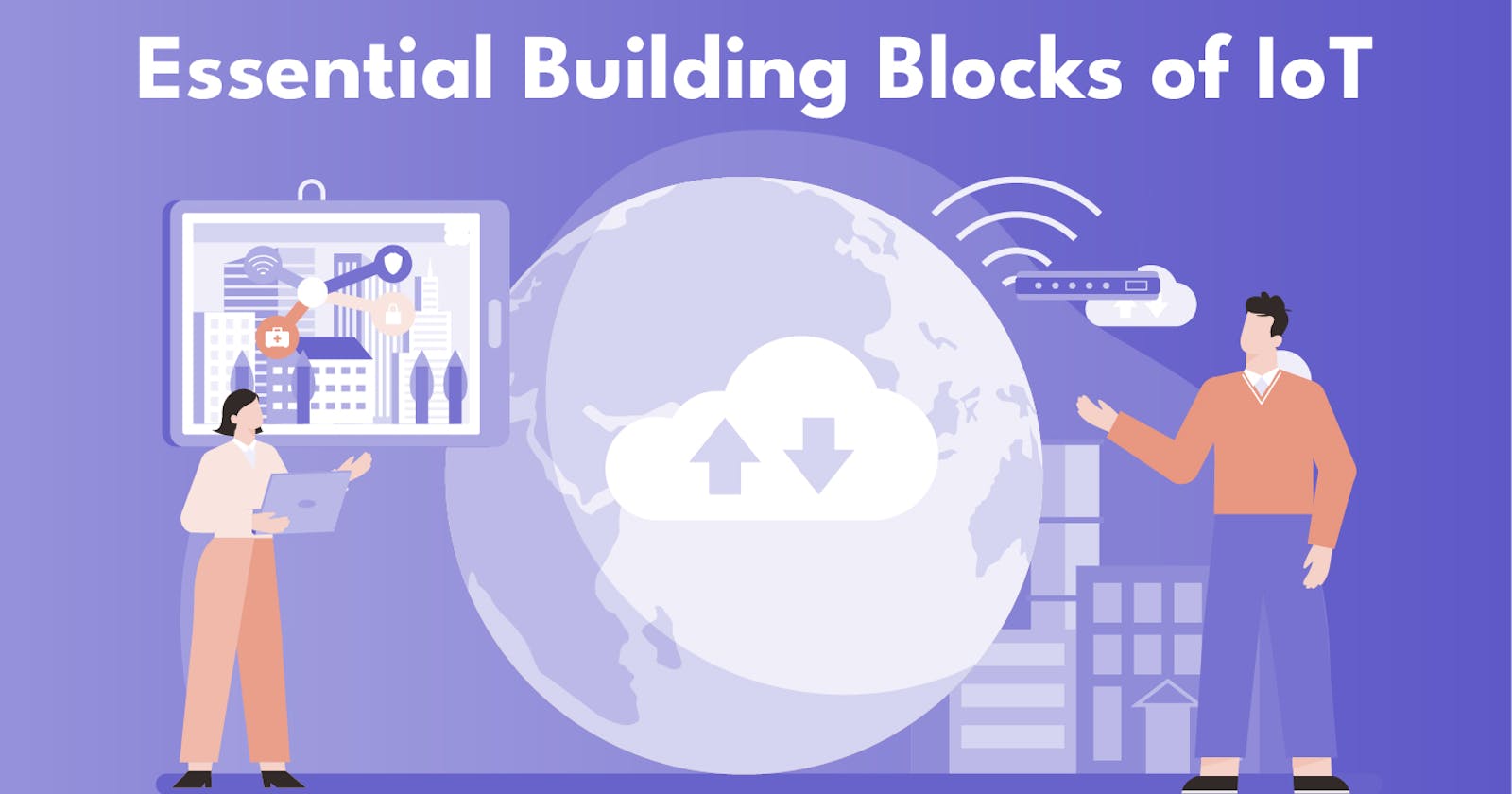IoT is a connection to the internet or a cloud-based application that captures, analyzes, and displays the operating conditions of physical assets. IoT solutions are mostly used to predict mechanical failures of physical assets in industrial or commercial environments. IoT solutions leverage vast computing resources that would not normally be available to on-site sensors.
The building blocks of IoT are
Sensor
It used to gather information from equipment, physical assets, processes or activities. An IoT ecosystem can have one or many sensors. It generally includes basic temperature, pressure, vibration, flow, voltage, and frequency. Some more sophisticated sensors include optical, navigational, or inertial as well. For example, a pressure sensor reads a value of 40 pounds per square inch (psi).
Analog to Digital Converter (ADC)
It is on a printed circuit board (PCB). It translates information from the pressure sensor into digitally transmitted format. For example the pressure sensor has a signal output of 4 volts which the ADC recognizes as the integer number 40, which corresponds to a value of 40 psi it is then represented in binary form as 101000 (machine language).
Transmission
Sensor captures the binary value and for security reasons the code is then encrypted. The code is then sent from the on-site computer network via the Internet to a remote cloud computer or data center. Based on the application needs the data transmission takes place at regular time intervals. Also when sometimes there is a significant change in the sensor’s value.
Data Storage
The sensor value is stored in a computer database that can easily serve other systems after reaching its final destination. From here there are many opportunities to implement data security, retention, reliability, redundancy, and user access policies.
Web Visualization
For humans to visualize the sensor information, typically a user interface (UI) is built on top of the database to display the sensor data in a chart or report. These user interfaces are built using hypertext markup language (HTML). These are viewed in a web browser or via a mobile app. This information is accessible remotely via the Internet. Through this an unlimited number of creative applications can be created anywhere in the world. This is operating at nearly across vast distances which makes the visualization of sensor data for the masses is an incredible benefit of IoT.
